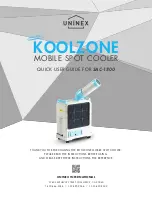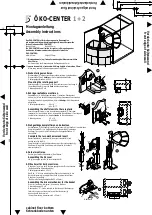
23
Operating
1. Time of printing. Further information is available from a qualified specialist workshop. Porsche recommends a Porsche partner as they have trained workshop personnel and the
necessary parts and tools.
NOTICE
NOTICE
DANGER
Operating
Operating instructions
In some countries, the relevant authorities must be
notified when you connect electric vehicle charging
equipment.
e
Check any obligations to notify the authorities,
technical connection requirements (TCR) and le-
gal requirements for operation before connecting
charging equipment.
Risk of damage to the charger
e
Always place the charger on a solid surface when
charging.
e
Porsche recommends operating the charger in
the basic wall mount. In certain countries, e.g. in
Switzerland
1
, the charger may only be operated
in the basic wall mount.
Refer to chapter "Installing the wall mount" on
e
Do
not
immerse the charger in water.
e
Protect the charger from snow and ice.
e
Protect the charger from potential damage due
to being driven over, dropped, pulled, bent or
crushed.
e
Do not open the charger housing.
Damage to the charger
The charger must only be operated within a tempera-
ture range from –30 °C to +50 °C.
e
To prevent overheating during operation, avoid
continuous exposure of the charger to direct
sunlight. If the charger overheats, charging will
be interrupted automatically until the tempera-
ture has returned to the normal range.
e
If the charger is too hot or too cold, let it return
slowly to the operating temperature range and
do not actively cool it down or heat it, e.g. by
cooling it down with cold water or heating it with
a hairdryer.
Charging
Charging instructions
Vehicle charge port
Electric shock, fire
Risk of serious or fatal injury due to fire or electric
shock.
e
Always observe the specified order for the
charging procedure.
e
Do not unplug the vehicle cable from the vehicle
charge port during charging.
e
End the charging process before disconnecting
the vehicle cable from the vehicle charge port.
e
Do not disconnect the charger from the electrical
socket during charging.
Faults are indicated by the red indicator lights.
e
Refer to chapter "Malfunctions" on page 29.
g
For information on connecting and disconnect-
ing the vehicle cable to and from the vehicle
charge port and for the charging and connection
status at the vehicle charge port, refer to the
Driver's Manual.
Charging times
The charging duration can vary depending on the
following factors:
–
Electrical socket used (domestic electrical outlet
or industrial electrical outlet)
–
Country-specific mains voltage and electric cur-
rent
















































